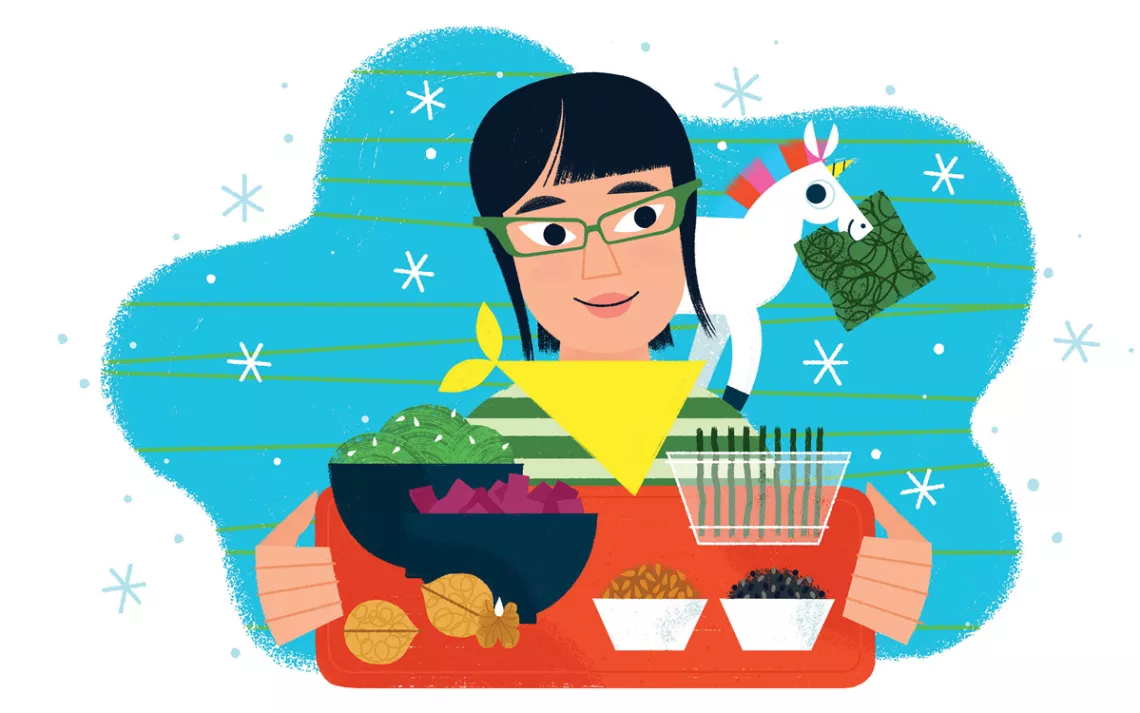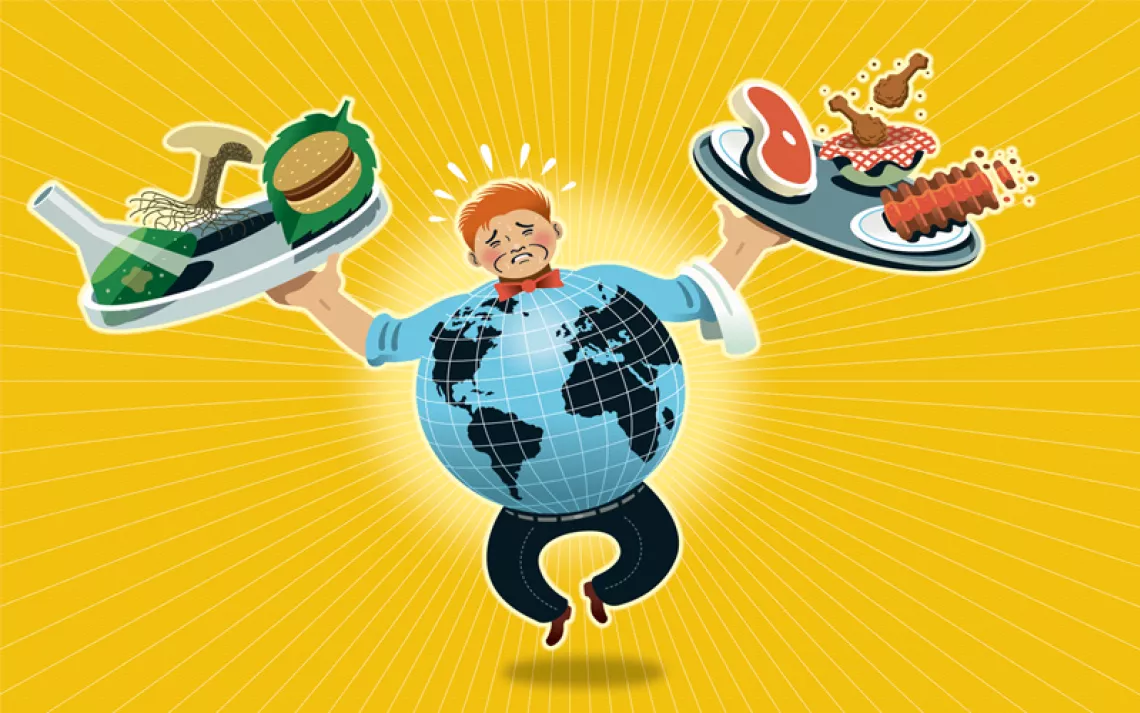Can I Get Omega-3s Without Eating Fish?
Yes, and here's how to do it

Illustration by Loris Lora
Hey Ms. Green,
I stopped eating seafood because of overfishing of wild fish stocks. What other harms are associated with harvesting and consuming sea creatures? Can I get omega-3 fatty acids from plants?
—Shin Yi in Alameda, California
You're right to be concerned. There's a catch with eating sea creatures (too many issues to list here). The fishing industry is beset by diminishing stocks of wild species owing to overharvesting, mislabeling, and global warming. According to a study published in the journal Science, the amount of seafood we can sustainably harvest from our oceans shrank by 4.1 percent (that's about 1.4 million metric tons of fish) between 1930 and 2010 because of climate change. The United Nations estimates that one-third of the world's fisheries are being pushed beyond their limits because of overharvesting. And a 2019 study by Oceana found that 20 percent of fish caught in 2018 were mislabeled.
Here's the good news: You do not need to eat fish to get those important omega-3 fatty acids. You can get many of the same nutrients via eating what some fish eat—seaweed. One study found that algae-oil supplements were nutritionally equal to cooked salmon. Omega-3s from algae don't have toxic chemicals like the polychlorinated biphenyls (PCBs) found in some sea creatures. For two of the omega-3s, eicosapentaenoic acid and docosahexaenoic acid, three ounces of seaweed (nori) or kelp (wakame, kombu, or dulse) might do the trick. According to Vegan Health's doctors and dieticians, vegans ages 14 and up can get their daily recommended amount of alpha-linolenic acid from seven to 10 walnut halves or two to three teaspoons of chia seeds or ground flaxseeds. Or you can eat two cups of purslane—it has more alpha-linolenic acid than other greens as well as some eicosapentaenoic acid.
 The Magazine of The Sierra Club
The Magazine of The Sierra Club



